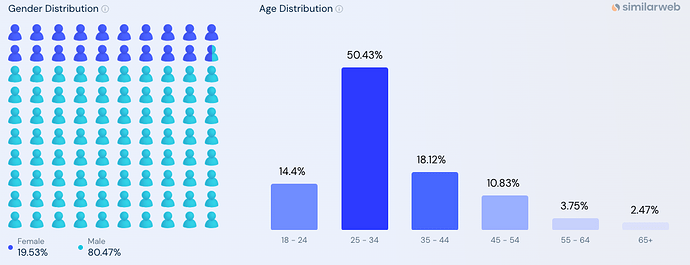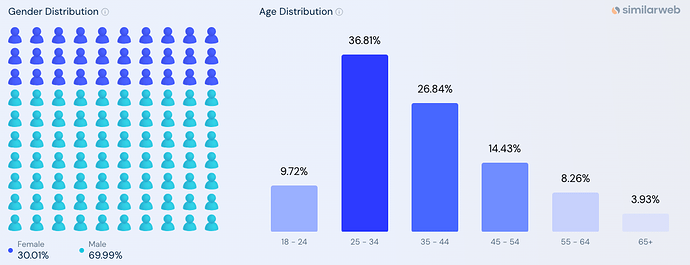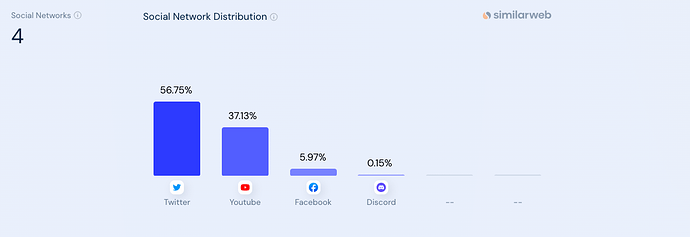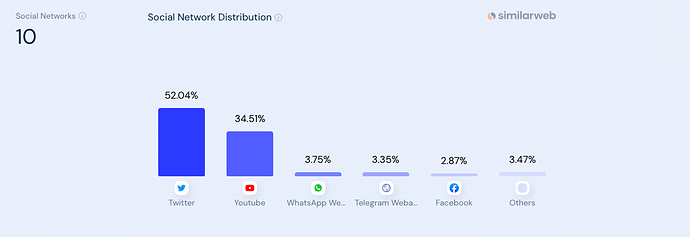As an example, I decided to do a quick demographic analysis to show how we can work with depersonalized data and get practical value out of it for web3. It is worth noting that the data is raw, does not cover a long period of time, and is not detailed.
ENS demographics (excluding non-binary people):
ENS
The data looks fairly homogeneous, as the percentage of women is only 20% and the age groups are unevenly distributed. Are ENS domains a product for men aged 25-34? I think, in line with web3’s values, no.
Someone says, “Well, this is just the specifics of the industry.” I will answer - yes, this is true, but only partially. Let’s take a look, for example, at the same distribution from our competitor – Unstoppable Domains.
UD
As you can see, their indicators are much closer to uniform, which means that the specifics of web3 have nothing to do with it. It would be a little foolish to assume that the ability to register a domain indefinitely has any significant impact on the target audience, which means that it is not a matter of the specifics of the product.
Then why is this happening? One reason is certainly that they have more decentralized traffic sources. While ENS uses 4 platforms, UD uses 10, although not all of them are suitable for us.
ENS
UD
What practical recommendations can be given based on this simple analysis? For example, use Instagram too as a means of dissemination/information, which is more gender-neutral and has a more age-diverse audience than Twitter (UD use Instagram).
IG
Don’t like Instagram because it’s more centralized and less anonymous than Twitter? Well, then you can invest more resources in the development of the YouTube direction, which also has more differentiated audience.
YT
This is an example of how you can increase both ENS audience and decentralization at the same time. But it’s worth noting that diversifying traffic sources is just a drop in the ocean of practical insights.





